What is it that you believe you can’t do? What limiting beliefs are roadblocks to achieving your dreams?
Don't Let Others Eclipse Your Presentation
What Carly Fiorina Knows About Public Speaking Gravitas
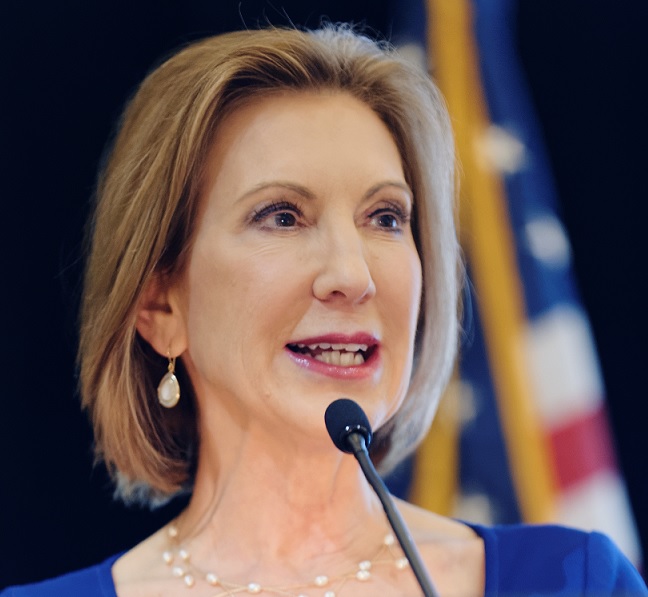 Is public speaking the key to winning an election? At the beginning of the debate 40% of the people didn't know Carly Fiorina. According to the google heat map, 82% googled her after her public speaking success. Whether you like her or not, clearly, she gave a stellar performance. She was a stand out among her peers, exuding executive presence and gravitas. What does that mean? If you define gravitas as decisiveness, poise under pressure, assertiveness, and confidence, Carly had it in spades.
Is public speaking the key to winning an election? At the beginning of the debate 40% of the people didn't know Carly Fiorina. According to the google heat map, 82% googled her after her public speaking success. Whether you like her or not, clearly, she gave a stellar performance. She was a stand out among her peers, exuding executive presence and gravitas. What does that mean? If you define gravitas as decisiveness, poise under pressure, assertiveness, and confidence, Carly had it in spades.
Her presentation was clear, focused, and direct. Her tone was confident and not overly emotional. When questioned, she didn't miss a beat. Carly's speech was devoid of hesitations and fillers yet she did not sound canned. Her responses were well thought out and when pressed, she responded with explanations, not defensiveness. Contrasted to Donald Trump, who responded with anger, Carly appeared in control and presidential. Granted, she was not questioned by Megyn Kelly. But the mark of a true leader is to deflect hostile questions and bridge to the message points. Based on her performance in the first debate, there's a good chance she'd be able to handle tougher questioning. As a result of her presentation, she increased her name recognition.
Public speaking is the new competitive advantage. What sets you apart from the competition is your presentation. This was evident when watching some of the other candidates. Although they may have had greater name recognition and a resume of accomplishments, a few candidates came across as flat or nervous. Others were confrontational. Can public speaking be the key to winning an election? Probably not when politics are at play. But the best leaders are great communicators. In politics and in business, excellent presentation skills will make you memorable, extend your brand, and build confidence in your leadership.
Public Speaking Bloopers
 Are you a perfectionist? Get over it. It's killing your presentation. In every speech and presentation class, I tell the audience that I don't allow perfection - for two reasons:
Are you a perfectionist? Get over it. It's killing your presentation. In every speech and presentation class, I tell the audience that I don't allow perfection - for two reasons:
- You can't achieve perfection on earth so why frustrate yourself?
- Even if you could achieve it, people will resent you. Nobody likes a perfect person.
And the same is true for public speakers. Nobody can relate to a perfectly polished presenter. In fact, a public speaker who is too polished can be perceived as slick. The goal is to be human. The audience relates to your humanity, not your perfection. Yes, your presentation needs to be professional and confident. But that doesn't mean you don't trip over a word, occasionally blank out or get loud feedback noise from the microphone. It's not about a perfect presentation. It's about a confident recovery.
People who hear me speak often say, "Diane embodies her message. I learned as much by watching her on stage as I did from her content." Let me assure you that there are times when I screw up. But I make sure I recover with grace. So I'm sharing some recent bloopers as I was preparing new youtube videos. As you can see, effective public speaking and video presentations take a lot of practice. A professional video presentation requires many takes. While the finished video presentation may appear seamless, this peek behind the camera demonstrates that the process takes a lot of practice.
Now that you can see I'm not a perfect public speaker, maybe you'll stop trying to be perfect and get real!
https://www.youtube.com/watch?v=_qHuZfUOujc
Public Speaking: Does Sizzle Matter More Than The Steak?
 What's more important? Style or Substance? Sizzle or Steak? I ask this question in my public speaking and presentation seminars. The class is usually divided but they vote more often for the sizzle. It makes sense. Before people can hear your content, you have to get their attention. In order to keep their attention you need to engage them.
We all know public speakers who have a message that matters, but because they have poor delivery skills, they lose their audience. The message doesn't get through.
What's more important? Style or Substance? Sizzle or Steak? I ask this question in my public speaking and presentation seminars. The class is usually divided but they vote more often for the sizzle. It makes sense. Before people can hear your content, you have to get their attention. In order to keep their attention you need to engage them.
We all know public speakers who have a message that matters, but because they have poor delivery skills, they lose their audience. The message doesn't get through.
Public speakers who have excellent presentation skills know how to attract and charm an audience. And that's why some public speakers with weak substance get higher marks.
This TEDx presenter and comedian humorously demonstrates how good public speaking techniques can make him sound intelligent even in the absence of content!
7 Platform Tips to Punch Up Your Performance
Performing is not about juggling balls in the air or acting on the big stage. Every presentation you give is a performance - even a meeting update! Whether your platform is a convention hall, a boardroom, or the kitchen table, good presentation skills can determine the quality of your performance and result in a successful outcome. Here are 7 platform tips to punch up your performance: Pause strategically. The first pause you take is when you walk on the platform. Look at two people and silently connect. Allow for the silence and then make your opening remarks. Come to a full stop at the end of a sentence. Count 2 beats to yourself before moving on. For greater impact and to evoke emotions, hold the pause even longer. Pause to signal that a point is significant. If you fail to pause, your message will sound like one run-on sentence and the message won't land. Speed talking translates as nervousness. Remember: power is never rushed.
Engage the group. Are you a talking head? Most audiences don't like to be lectured. Savvy public speakers employ engagement techniques to draw attention and maintain interest. You can ask rhetorical questions, flash a photograph on the screen, tell a story, share a case study, create a discussion, or use polling software. Try getting the audience on their feet. Whatever technique you choose, be sure the audience is involved in your message.
Rehearse in the room. The best public speakers rehearse out loud and time themselves. But there is something about practicing in the actual meeting room that makes a difference. I can't tell you why this works. I do know that every time I practice my speech or presentation in an empty room, I always feel more confident.
Find a friendly face. Maybe it's the person who is smiling. Make an eye connection and deliver your opening line to that one person. Don't try to convert the scowling face. That will shatter your confidence. Look at the receptive person and then move on to someone else. Keep looking at friendly faces.
Offer a challenge. Audiences have come to expect to be spoon fed. They lean back in their chairs and wait for you to enlighten them. It's easy for them to expect the presenter to do all the work. After all, you're the expert. You can turn the tables on them and challenge them. Begin your presentation with a challenge to shake them up. And end with a call to action and challenge them to keep their commitment.
Remember the rule of three. A well known principle of effective public speaking is the use of repetition. Martin Luther King used repetition in his I Have a Dream Speech. The speech originally had a different title but because he said "I have a dream" repetitively, it became known by that refrain. The advertising world employs repetition using the rule of three in commercials and jingles. Think of fairy tales - Three Little Pigs, nursery rhymes - Three Blind Mice, and movie titles - Three Men and a Baby. Craft your message with three agenda items, 3 main points, and three benefits, and you'll be clear and memorable.
Mirror the audience. Have you ever hit it off with somebody right away? They were probably just like you. It's the same with audiences. So how can you increase your likability? Mirror them. Notice their body position. How is their energy? Is it fast or slow? What kinds of words or expressions do they use? In one-to-one communication, mirroring is much easier but you can also mirror a large audience. If they are an extroverted sales team, you'll want to raise your energy and volume. If they're more scientific you'll want to tone it down and provide more data.
I recently trained a group of economists in the U.K. and I was in full presentation mode, as I projected my voice and increased my energy. This group was more soft-spoken. During a break, the leader explained that the energy level was quieter in this U.K. company. "So I would be considered loud?" I asked. "Yes!" he answered. What a surprise! In the U.S. I'm considered more soft spoken than some of my peers. I returned to the meeting and toned it down. The meeting was a success.
To punch up your presentations remember to P.E.R.F.O.R.M.
Speak at Your Own Risk: When Public Speaking is a Lost Opportunity
Speaking is the new competitive advantage. At least that's what I told my audiences until last week. I was excited to attend a wellness conference during the weekend in New York City. The keynote speaker was a celebrity I admired. But what was more exciting were the topics. Most of the speakers were doctors, dentists, and health professionals. The presenters spoke for 20 minutes as in a TED talk format and the presentations continued non-stop throughout the day.
Some of the research was cutting edge and I was eager to learn from the presenters. My enthusiasm quickly turned to boredom after sitting through the first few presentations. Clearly, the presenters were subject matter experts with impressive credentials. But they quickly sacrificed their credibility when they stepped up to the platform. What a lost opportunity! Here are three mistakes that were consistent among the speakers.
1. Using the Microphone Ineffectively
Almost every speaker held the microphone at chest level or too far away from their mouth. When the audience can't hear, they tune out. It also makes the subject matter expert look like an amateur. A microphone should be held no further than four inches below the mouth. My recommendation to the event planner was to provide an attached microphone or require a rehearsal with the hand held mic.
2. Being Speaker-Centered
This is all too common in business. I've experienced it in every kind of speaking situation including sales presentations. There was one woman in particular who spent most of the time telling her story. Not only was it too long; it was all about me, myself, and I. Here's the 411 on the audience. They don't care about you! They're interested in what you and your information can do for them. Yes, tell your story. We want to know you on a personal level. But keep it brief and move on to provide value.
It's not difficult to be listener-centered. I've demonstrated in one minute or less how to take any subject and create a listener-centered opening that speaks to the listener's self interest. It's not about you. It's about them! Chapter 7 in Knockout Presentations reveals the process of Listener-Centered Communication. It's powerful.
3. Bad Timing
Both the presenter and the coordinator are culpable when time commitments are not kept. The reason speakers run out of time is a) they have too much material b) they didn't rehearse out loud. One speaker was telling an interesting story and realized she had two minutes left. She stopped in the middle of the story and quickly flipped through to the end of the PowerPoint slides. The presentation lost impact. And this was a subject I really wanted to hear. At this point, my friend leaned over and whispered, "Diane, this is a real opportunity for you." (Not a good sign).
Were there other mistakes? Yes. But these were the most common errors. Were there any good presenters? Yes. I can think of two, maybe three. The celebrity keynote was excellent. It was obvious that she had a lot of public speaking experience. What is the lesson here? Poor presentation skills do not motivate an audience to action. I didn't approach any of the speakers after hearing them present on stage.
There was a silver lining, though. I won the grand prize - a Vitamix blender! So all was not lost - except the opportunity for the presenters to build their brand and increase their business.
Public Speaking Success: What Seed Are You?
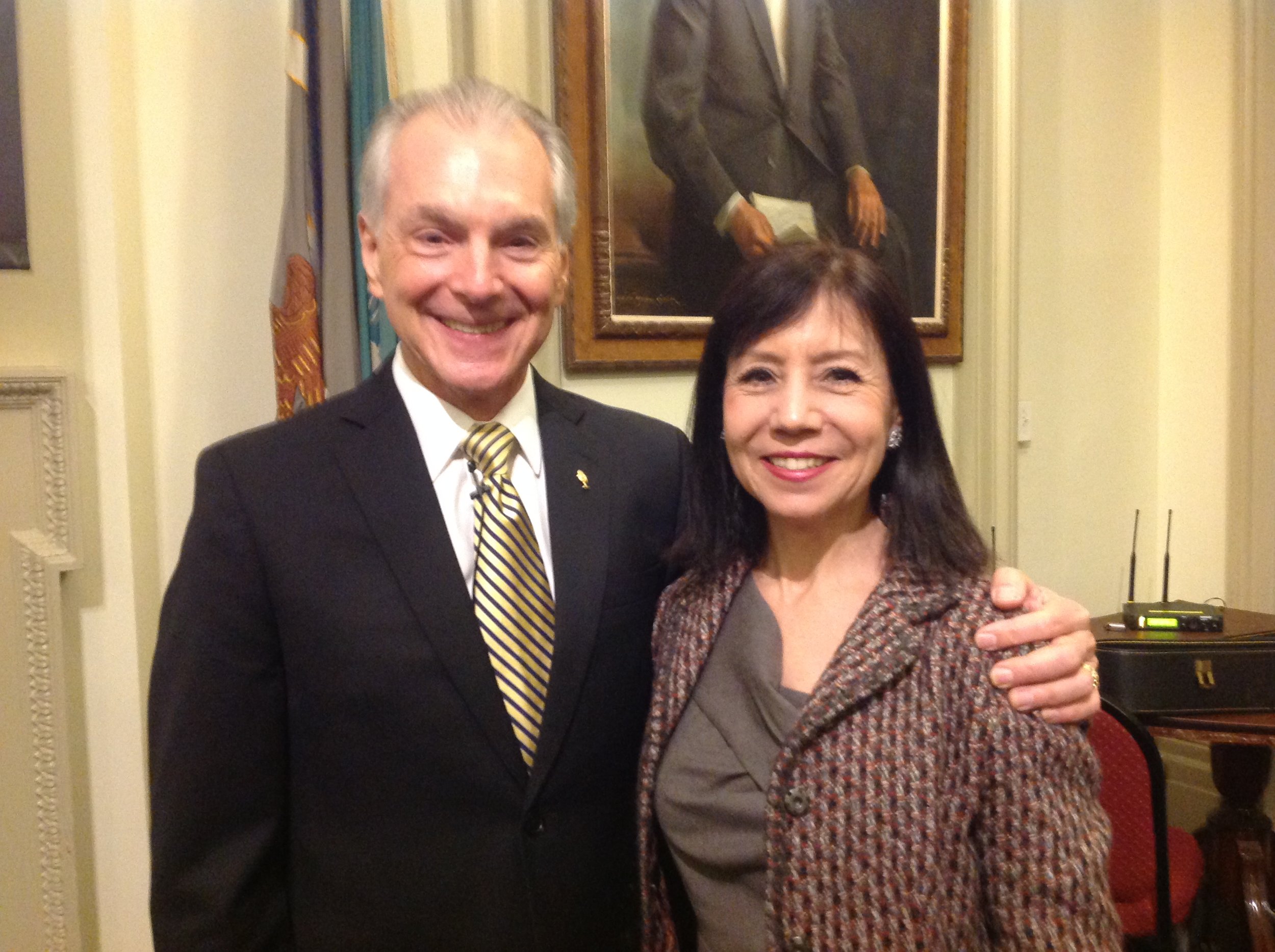 Jim Cathcart, motivational speaker and author of the Acorn Principle, spoke to the NYC chapter of National Speakers Association today. As a former president of the National Speakers Association and a Hall of Fame Speaker, Jim shared his time line and journey of success to the heights of professional speaking. His insights and advice for success applied to speakers and non-speakers alike.
Holding up an acorn, he asked the audience "What seed are you?" Jim explained that the stem represents your legacy, the cap holds on to the seed to help it grow (your support system, coaches, mentors) and the seed is the potential that lives within you.
Jim Cathcart, motivational speaker and author of the Acorn Principle, spoke to the NYC chapter of National Speakers Association today. As a former president of the National Speakers Association and a Hall of Fame Speaker, Jim shared his time line and journey of success to the heights of professional speaking. His insights and advice for success applied to speakers and non-speakers alike.
Holding up an acorn, he asked the audience "What seed are you?" Jim explained that the stem represents your legacy, the cap holds on to the seed to help it grow (your support system, coaches, mentors) and the seed is the potential that lives within you.
The keys to success according to Jim are:
- Know yourself
- Accept yourself
- Improve yourself
He advised speakers to "nurture your nature." In other words, be true to your style as a public speaker. He contrasted the over-the-top expressive motivational speaker, Zig Ziglar with the reserved, business content speaker, Brian Tracy. Both were wildly successful because they were authentically true to their natural speaking styles.
The psychologist and professional speaker, Tony Allesandra, author of The Platinum Rule, had difficulty starting out as a speaker. A coach diagnosed the problem and told him to stop trying to be Jim Cathcart. Jim is a Southern gentleman and Tony is an "in your face" guy from the streets of Brooklyn. When Tony accepted himself, he found his own voice and his career soared.
Jim encouraged the audience to discover themselves and how they operate. He challenged the group to make a commitment to take the first step and the rest will come. Whether you want to be a professional speaker or raise the bar on your presentation skills, decide what you want and be a fanatic about it. According to Jim, "Success is unreasonable. Ordinary is reasonable." If you study your topic for one hour a day, within five years you'll be an expert. We all have seeds of greatness waiting to be expressed.
So, what seed are you?
From Good to Great to Awesome Presentations
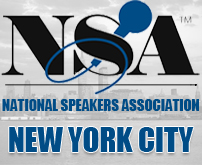 How do public speakers go from good to great to awesome? They attend the NYC chapter of the National Speakers Association. The guest speaker for November was executive speech coach, Patricia Fripp. The speaker covered five areas every professional speaker must master in order to be great on the platform:
How do public speakers go from good to great to awesome? They attend the NYC chapter of the National Speakers Association. The guest speaker for November was executive speech coach, Patricia Fripp. The speaker covered five areas every professional speaker must master in order to be great on the platform:
- Strong Structure - Fripp shared the importance of knowing your premise and telling the audience the why and how of your message.
- Compelling Openings - The audience received a page with one liners such as "It never ceases to amaze me...", " The year was... ", "What would the world be like without...?"
- Emotional Connection - To create an emotional opening start with something emotional or heartfelt and back it up with logical reasons.
- Memorable Stories - Stories are powerful and can be any length as long as the audience remains engaged.
- Laser Sharp Specificity - Generalities weaken a presentation. Words like "stuff" dilute the message and confuse the listeners. Remove empty words and use specific language.
After the morning lecture, Fripp spent the afternoon doing quick laser coaching with volunteers. Each speaker spoke no more than two or three lines before the coaching began. It was evident how a powerful opening sets the stage for the rest of the presentation.
To go from good to great to awesome public speaking, remember the five tips: strong structure, compelling openings, emotional connection, memorable stories, and laser sharp specificity.
Press Release: DiResta Communications Founder Invited to Sit on Panel at Women's Leadership Exchange 2013 NY Conference
For Immediate Release
Diane DiResta Speed Coach and Presentation Skills Expert Panelist at WLE 2013 NY Conference: Where Business Opportunities Happen
New York, NY (October 11, 2013) – Diane DiResta, President and CEO of DiResta Communications and author of Knockout Presentations, was invited to sit on the WLE Leadership Executive Circles (LEXCI) Panel. Attendees learned the latest strategies and tactics from panel experts in marketing, branding, business law, business health, speaking, and presentation skills to take their businesses to the next level.
Six R's of Public Speaking and Presentation Success
 September is back to school month. Students first learn the three R's- "Reading, (w)Riting, and 'Rithmetic." But for public speakers and presenters there are actually six R's.
Last weekend I attended a workshop on videomarketing - Share the Sizzle. One of the speakers, Mary Agnes Antonopoulos, talked about the six R's for succeeding in social media. I realized that those same six characteristics apply to successful public speaking and presentations. The six R's are Relevance, Recognition, Rapport, Relationships, ROI, and Responsibility.
September is back to school month. Students first learn the three R's- "Reading, (w)Riting, and 'Rithmetic." But for public speakers and presenters there are actually six R's.
Last weekend I attended a workshop on videomarketing - Share the Sizzle. One of the speakers, Mary Agnes Antonopoulos, talked about the six R's for succeeding in social media. I realized that those same six characteristics apply to successful public speaking and presentations. The six R's are Relevance, Recognition, Rapport, Relationships, ROI, and Responsibility.
Relevance - One reason presentations fail is lack of relevance. I see this all the time in my coaching practice. Too many presenters are speaker-centered and not listener-centered. They talk about what's important to them, instead of addressing the self-interest of the audience. Public speakers may have a relevant topic but if they don't present examples, case studies, or stories that are meaningful to the listeners, the ideas can die a quick death. For example: when pitching an idea to senior management, don't spend time on details. That's irrelevant to them even though details are very relevant to end users. Speak to the interests of the audience for maximum relevance.
Recognition - People do business with people they know, like, and trust. The first step is visibility. Do people know who you are? If not, it will take longer to gain their trust and to sell your ideas. I knew an executive whose department contributed significantly to the company's revenues; however, most people weren't aware of this executive's accomplishments. As a result, the executive did not advance as quickly as expected. The better the audience knows you, the more easily they'll accept your information and ideas. That's why companies hire celebrities to sell their product. Seize opportunities to speak and promote yourself to increase your recognition.
Rapport - Rapport has to do do with likability. How likable are you as a presenter? Do you exude warmth? Or are you a talking head? I've noticed some commonalities between speakers who fail to achieve audience rapport.
First, they don't smile. If you're too serious, you may come across as distant and even intimidating. The public speaking myth is that "serious" means "professional." Actually, the reverse is true. The top leaders and public speakers smile and use humor. When you're relaxed, you appear more confident.
The second mistake I've observed is rushing. When speakers get right down to business and talk AT the audience instead of with them, the audience retreats emotionally. That's why many speakers begin with opening remarks and humor. They share something personal about themselves or the audience. When I was in Tanzania, I memorized my opening remarks. I said, "Good morning. I'm happy to be here!" in Kiswahili. To my surprise, they audience broke out in applause. I was literally speaking their language!
The third reason for failed rapport is that presenters don't pace the audience. They hold on rigidly to their outline or PowerPoint. Successful public speakers are able to let go of the script and move where the audience wants to go. Don't let rigidity be one of your six R's.
Relationships - If rapport is about likability, then relationships are about trust. Once the audience likes you, it means they're engaged at the moment and willing to listen. You may be entertaining but until the audience trusts you, they won't take action.
Let's say you're giving a marketing talk. You have excellent platform skills. You're entertaining. But at the end of the presentation, nobody buys your product. Assuming you're in front of the right people, audience skepticism may mean they don't know you well enough.
The top speakers build a relationship with the audience and that happens before they ever meet. It starts with an email which may be followed up with a postcard or phone call. These public speakers provide third party testimonials and leverage mutual relationships.
In company meetings, you'll have better success in gaining support if you meet people for lunch, stop by their desks to say hello, and get to know them. Chase Manhattan Bank had a slogan that said it best: "The right relationship is everything."
ROI - We often think of ROI as Return on Investment. For presenters, it also means Return on Impact. If you're selling a product or pitching for funding, success can be measured in dollars. Most of the time, presenters are communicating information or selling an idea internally. These presenters won't see increased dollars in their pockets if their idea is accepted. But they will experience return on impact because they'll increase their influence within the organization.
How do you know if you've made impact with an informational presentation? The listeners will be engaged. They'll ask questions. You'll see nodding heads and direct eye contact. Positive feedback will filter through the company grapevine.
Responsibility - Public speakers and presenters have a responsibility and some take it lightly. You have a responsibility first and foremost to deliver what you promise. When a store advertises a sale and then pulls a Bait and Switch act, you automatically feel frustrated, angry and distrustful. Many consumers will walk out of the store.
I've seen speakers do the same thing. I once heard a celebrity speaker announce, "I don't think I'll talk about... [the subject that was published in the schedule]. We can cover that in the second session. What I want to talk about is..." The problem with that decision was that I didn't sign up for the second session and that celebrity speaker lost credibility. I'll read his books, but I won't attend a live presentation again.
Presenters have an obligation to their listeners. There's a contract between a public speaker and an audience. Even if you're giving a meeting update, be sure to honor the time commitment and give them the information in a way they can understand. When you speak to a large audience, be sure to deliver the presentation they signed up to hear.
Body Language is the Message
A professor once said, "Words conceal rather than reveal". If that's true, how does the listener hear the real message? The answer is the study of pragmatics. Non-verbal communication is as important to every public speaker as the words they prepare. But too often, public speaking becomes an exercise in memorizing words without much thought to their physical presentation.
If the public speaker is unprepared, it will be communicated through nervous body language. The body will betray the presenter every time. Most of the message is non-verbal. For that reason, it's imperative that public speakers study pragmatics. Watch this video to learn about body language.
Press Release: Diane DiResta Gets Her Executive Presence On at Saks Fifth Avenue on 12-12-12
For Immediate Release
DiResta Teaches Women How to Amp Up Their Executive Presence
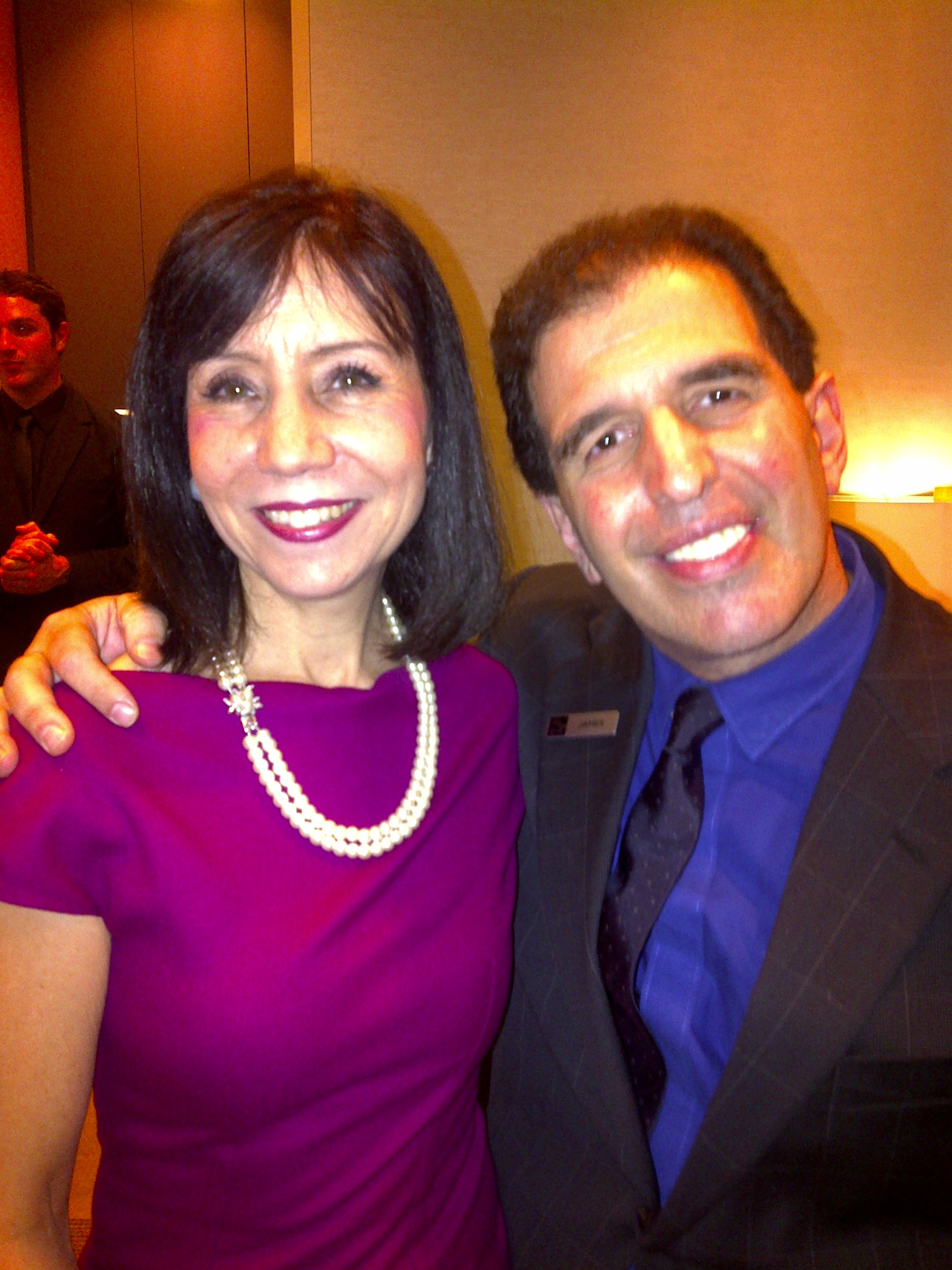 New York, NY (Dec 12, 2012) -- Diane DiResta, CEO of DiResta Communications and author of Knockout Presentations, co-hosted a holiday event for executive women sponsored by Saks Fifth Avenue. The title of the event was, Get Your Executive Presence On, and included a short presentation from DiResta, a preview of Tahari's elegant winter line, and free Chanel makeovers for the women in attendance.
New York, NY (Dec 12, 2012) -- Diane DiResta, CEO of DiResta Communications and author of Knockout Presentations, co-hosted a holiday event for executive women sponsored by Saks Fifth Avenue. The title of the event was, Get Your Executive Presence On, and included a short presentation from DiResta, a preview of Tahari's elegant winter line, and free Chanel makeovers for the women in attendance.
DiResta works with emerging leaders and executives to develop executive presence and gravitas. DiResta says, "At a certain level, it's not what you know, it's your leadership and ability to influence. Executive presence is difficult to define; it involves good presentation skills, speaking with conviction, decisiveness, self-confidence and a polished image."
Why the Early Bird Speaker Catches the Worm
 When I first started out in my speaking business, I was hired by American Management Association to give public seminars in public speaking and presentation skills.
One day, the program director sent around a memo stating that all AMA presenters were expected to arrive early to the class. It was not acceptable to show up at 9:00 a.m. What? Who would do that? I always arrived an hour early.
When I first started out in my speaking business, I was hired by American Management Association to give public seminars in public speaking and presentation skills.
One day, the program director sent around a memo stating that all AMA presenters were expected to arrive early to the class. It was not acceptable to show up at 9:00 a.m. What? Who would do that? I always arrived an hour early.
To be a good public speaker or presenter, you need time to set up the room.
When the curtain rises on a Broadway show, all actors are in place. But they don't show up 5 minutes before curtain call. There is a lot that goes on behind the scenes of any performance. In addition to getting into costumes and makeup, actors warm up their voices and review their lines and staging to make sure they get it right onstage. The same is true for public speakers.
As a keynote speaker, facilitator, or trainer, you are giving a performance. What happens before the presentation is as important as the live presentation delivery. Master public speakers know that successful speaking is 90 percent preparation and 10 percent delivery.
So the next time you give a speech or presentation, arrive early. Practice the presentation in the empty room. There's something about getting the feel of the room that can boost your performance. Use the time to do some deep breathing and to visualize a positive outcome. And then get ready to greet every person who enters the room. This will create a positive tone and talking to people before your speech will reduce nervousness. It will also help the audience feel comfortable with you. Next time you're tempted to breeze in at the last minute, don't!
For a free checklist on what to do before, during and after a presentation,
 our facebook page.
our facebook page.
10 1/2 Ways to Keep Viewers Engaged in Your Video
 Video marketing is hot. The next best thing to face-to-face public speaking is a video. More businesses are creating video presentations because they know videos attract attention. Youtube is now the second largest search engine after google and for good reason. Video presentations are more engaging and motivational than webinars which have static slides. Video presentations make use of both visual and auditory learning styles but unlike PowerPoint, it's a lot easier to learn a skill by watching a video.
But video alone will not engage your audience. There’s a lot of competition for boring videos. Effective video marketing requires compelling content and good presentation skills.
Video marketing is hot. The next best thing to face-to-face public speaking is a video. More businesses are creating video presentations because they know videos attract attention. Youtube is now the second largest search engine after google and for good reason. Video presentations are more engaging and motivational than webinars which have static slides. Video presentations make use of both visual and auditory learning styles but unlike PowerPoint, it's a lot easier to learn a skill by watching a video.
But video alone will not engage your audience. There’s a lot of competition for boring videos. Effective video marketing requires compelling content and good presentation skills.
This video immediately engages the listener. I'm not endorsing the content or the speaker but the video serves as a good model for capturing and keeping attention. Notice how this video presentation follows all the guidelines. http://www.doubleyourfatlossnow.com/
Here are some tips to keep your audience listening and engaged to your video presentation from beginning to end.
Attract Attention with a Great Title Titles sell. Here's how to create attractive headlines:
- Use Numbers: Five Ways to Grow Your Business
- Pique Curiosity: Untold Secrets Internet Marketers Don't Want You to Know
- Ask a Question: What is your Reputation Costing You?
- Use Emotion: All Stressed Out and No One to Choke
Get Started Immediately Attentions spans are short. Make sure the video starts up when opened. Don't allow ads. Introduce yourself and get right to the point. Lengthy introductions are passe.
Get Personal People buy from people they know, like, and trust. So tell them something personal. Add a photo of yourself, possibly a family member or pet. People relate to animals and a picture of your pet humanizes you and creates a bond with the audience.
Provide A Promise What will they gain by listening to your video presentation? Provide an agenda or road map. Listeners want to know where you're taking them. A three point agenda works best.
Keep the Action Going Every Three Seconds The trend in videos is to change scenes every three seconds. Yes, three seconds! I tested this on myself. I noticed that every time I was about to fast forward a video presentation, the scene would change. I found it uncanny that this video was so tuned into my attention span. Looking for a formula, I started to count. One..two..three. The slide changed. One..two..three. The slide changed again. That's how I discovered the three second rule.
Provide Real Value Nobody will stay tuned for a sales pitch or a rambling message. Effective video marketing offers new information, and promises more data and solutions that the listener desires. Content is king on the internet as well as in videos.
Find Their Point of Pain Education for the sake of knowledge is noble but it won't sell your product, service, or brand. People need to know you understand their pain.Identify their pain points and offer relief. Your presentation must speak to them directly.
Build Anticipation In the above video, they tease the audience with the 4 hormones needed to burn fat that the medical profession doesn't talk about. Just like a good soap opera, build anticipation and people will stay tuned.
Entice with your Voice. Video presentations are a form of public speaking. If you can't afford a professional voice over, make sure you use the deeper range of your voice, articulate clearly, and keep an even pace. If your voice is not your best asset, invite a friend to do the voice over.
Don’t Add a Control Bar How many times do you try to fast forward to the end? As much as I desire a control bar as a listener, this gives the audience too much control. As long as the video provides strong content and moves quickly, you'll keep the audience listening.
Save the Offer for the Very End Avoid a sales pitch and focus on education. As you build a convincing case, people will be ready to buy. Make sure the offer happens at the very end on the last slide. Nobody likes a hard sell.
What are your tips for creating a knockout video?
Send me your links to the best videos you've watched.
Networking Presentations Are Not Just for Speaking
Speaking is the new competitive advantage. I wrote two blog posts about the importance of good public speaking skills when giving an elevator speech and talked about keeping it concise and compelling. I belong to two networking groups - Gotham Networking and Adrian's Virtual Network. Both groups have a listserv which I use often. Once a week, a member can promote their business by sending a written elevator speech to the listserv. Most of these presentation showcases get lost because they are:
- too long
- too confusing
- too cluttered
Here's a recent written elevator speech by Michael Spadaro that is simple to understand and well formatted. Notice the use of numbers, bold, spacing, hyperlinks, and contact information.
How hard is it for growing businesses to find an IT partner that is not only competent, but also trustworthy, responsive, and a pleasure to work with? It's hard- really hard. Unless you're reading this e-mail.
In the interest of brevity, here's what we do:
1. We help business make smart IT decisions
2. We act FAST to solve day-to-day IT problems
3. We keep IT running smoothly ("like buttah")
Our clients are businesses (typically 5-50 employees) that:
1. Are Growing
2. Are Efficient
3. Value their Time
Our creds:
1. We've been doing this for 5 years, which means we've been doing it long enough to master our craft, but not so long that we're in danger of being out of touch.
2. Our customer service has been recognized by many as being among the best in the industry.
3. We've got an army of enthusiastic clients who are willing to speak on our behalf
Check out our website at http://www.helpwithasmile.com for more information including a rundown of our entire service offering, as well as case studies, staff bios, and more.
Michael Spadaro
Congratulations, Michael. You proved that good presentation skills are not just about speaking.
Teen Confidence Crisis Averted with Confidence Class
Make a Promise to Be a Better Public Speaker
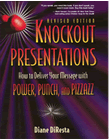 May 4th is Make a Promise Day which was started by Matthew Cossolotto. Why make a promise? Because a promise is more powerful than a goal. Quick! How many New Year's Resolutions have you already broken? When you promise to be a better public speaker, there is an energy and commitment that drives you to action. My military father taught me to never break a promise. When you gave someone your word, that was sacred.
You may keep your promise to others; but what about yourself? I recently made a promise to give up chocolate for one month. It was hard, but I would never have done it if I hadn't made a promise. A promise is putting a stake in the ground. It's drawing a line in the sand. You can become a better public speaker right now and the first step begins with a promise.
May 4th is Make a Promise Day which was started by Matthew Cossolotto. Why make a promise? Because a promise is more powerful than a goal. Quick! How many New Year's Resolutions have you already broken? When you promise to be a better public speaker, there is an energy and commitment that drives you to action. My military father taught me to never break a promise. When you gave someone your word, that was sacred.
You may keep your promise to others; but what about yourself? I recently made a promise to give up chocolate for one month. It was hard, but I would never have done it if I hadn't made a promise. A promise is putting a stake in the ground. It's drawing a line in the sand. You can become a better public speaker right now and the first step begins with a promise.
So, do it. Once you promise, the question becomes how to do it. Here are some ideas for becoming a better public speaker and sharpening your presentation skills.
- Read books and articles.
- Listen to podcasts.
- Attend toastmasters.
- Register for a public speaking class.
- Get a coach.
- Attend National Speakers Association. (NSA-NYC event May 21st)
- Watch top speakers and model their behaviors.
- Volunteer to speak in your community or at work.
- Prepare in advance of your presentation.
- Practice out loud and time yourself. Watch yourself on videotape.
- Simplify your notes. Use bullet points.
- Get an accountability buddy to hold you to your promise.
When you boost your presentation skills and become a better public speaker your life will change. I promise.






